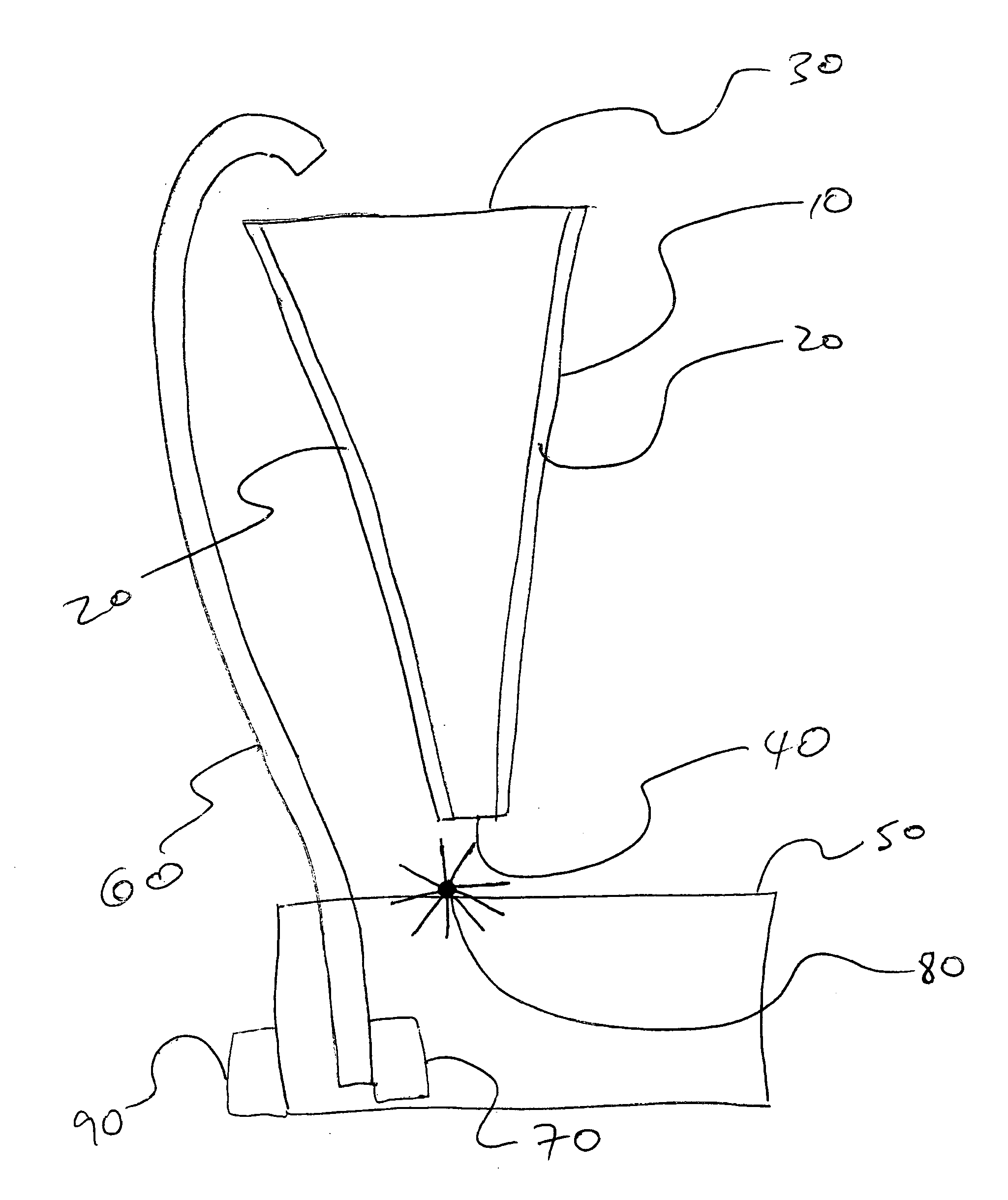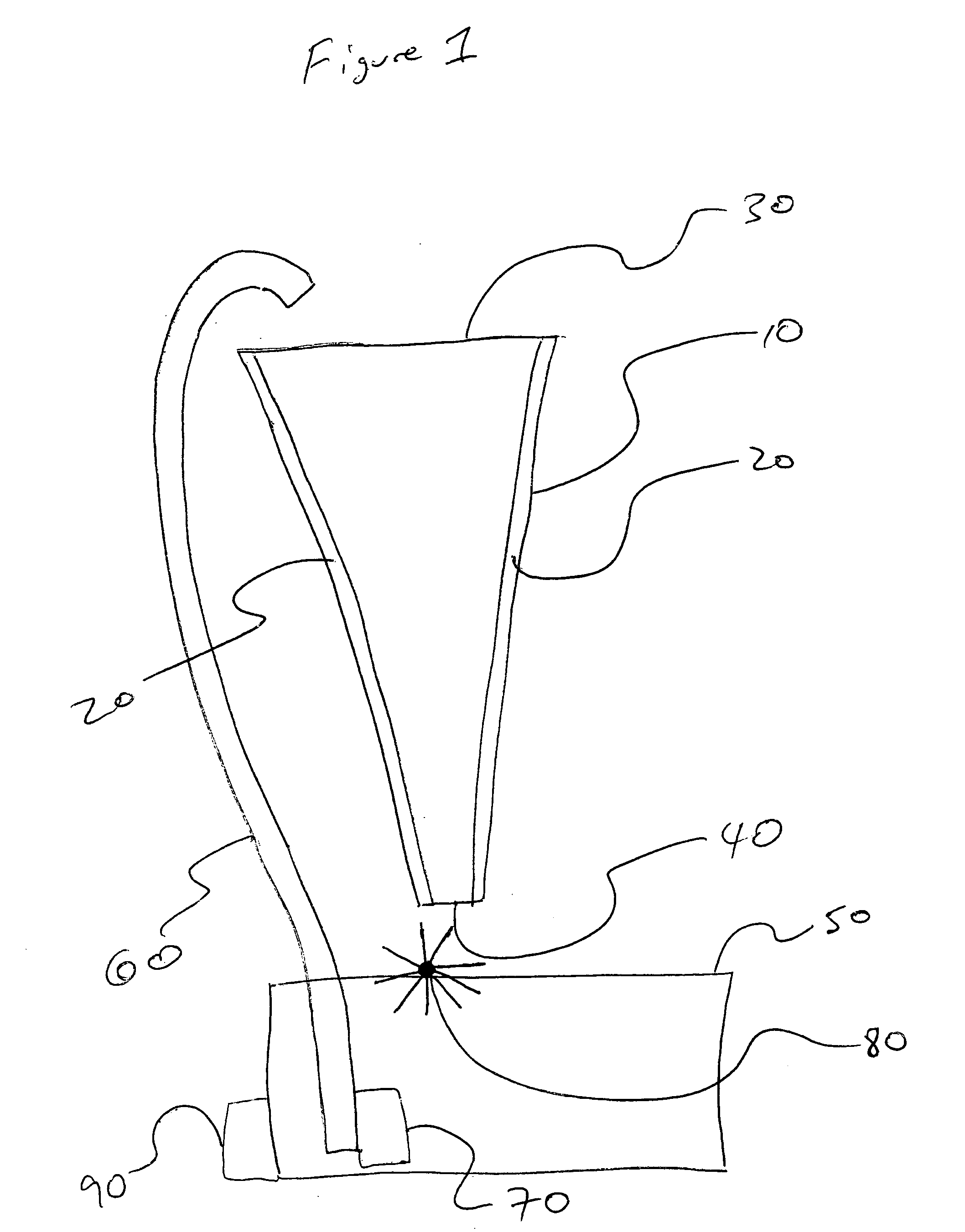Apparatus and method for separating tritated and heavy water from light water via a conical configuration
- Summary
- Abstract
- Description
- Claims
- Application Information
AI Technical Summary
Benefits of technology
Problems solved by technology
Method used
Image
Examples
Embodiment Construction
Definitions
[0017] Heavy water—Where one of the hydrogen atoms in normal water has been replaced by a heavier isotope such as tritium in the case of tritiated water (HTO) or deuterated water (D2O). It is created in small quantities in nature when cosmic rays interact with nitrogen in the upper atmosphere. These rays interact with nitrogen (14N) or with deuterium (2H) and form tritium and carbon (12C). As these interactions happen in the upper atmosphere the tritium falls to earth in rainfall. It is created in large quantities in nuclear power plants when the inner ring of water being used as a coolant is bombarded with neutrons in a nuclear reactor or an accelerator.
[0018] Light Water—Normal water—H2O
[0019] Tritium—is a radioactive element. The tritium atom (3H) is unstable because it has two extra neutrons in its nucleus. These neutrons give tritium an excess amount of energy. Because of this, the atom will undergo a nuclear transformation or radioactive decay. In this, the atom...
PUM
| Property | Measurement | Unit |
|---|---|---|
| melting point | aaaaa | aaaaa |
| temperature | aaaaa | aaaaa |
| concentration | aaaaa | aaaaa |
Abstract
Description
Claims
Application Information
 Login to View More
Login to View More - R&D
- Intellectual Property
- Life Sciences
- Materials
- Tech Scout
- Unparalleled Data Quality
- Higher Quality Content
- 60% Fewer Hallucinations
Browse by: Latest US Patents, China's latest patents, Technical Efficacy Thesaurus, Application Domain, Technology Topic, Popular Technical Reports.
© 2025 PatSnap. All rights reserved.Legal|Privacy policy|Modern Slavery Act Transparency Statement|Sitemap|About US| Contact US: help@patsnap.com


